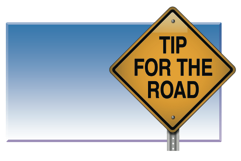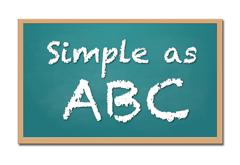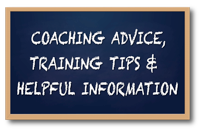running coach marathon training personal training running advice online coaching injury prevention injury treatment how to train for a marathon how to run a marathon training advice marathon runner boston marathon philadelphia marathon 100 marathons long distance running
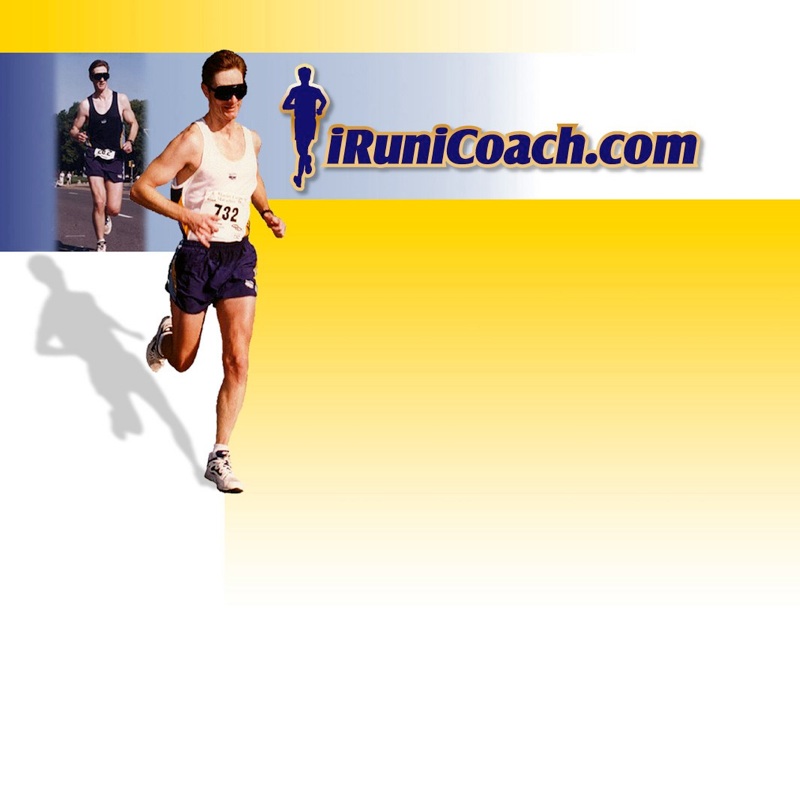
FOOT TYPES
Although feet vary greatly in size and shape, generally speaking, there are three basic foot types and nearly all runners (and walkers) fit into one of the three categories.
A Flat Foot (or Pronated foot) strikes on the outside of the heel and rolls inward excessively. (It should be noted, a slight amount of pronation is normal. Over-pronation causes problems.) About 60 - 65% of the population have pronated feet.
A High-Arched (or Supinated foot) is rigid. It does not pronate (or roll inward) enough and is not an effective shock absorber. Up to 30% of the population have supinated feet.
A Neutral (or Ideal) foot lands on the outside of the heel, then rolls inward slightly to absorb shock (this is normal pronation) and it is considered the most biomechanically sound foot type for runners or walkers. Only about 10% of the population have neutral or ideal feet.
Knowing your foot type will help you prevent injuries by selecting a shoe which best suits your needs.
WET TEST
If you don't know your foot type, you can perform a simple at home test to determine the category in which you belong.
The "Wet Test" as it is known, works like this: First, get your foot wet. Next, step onto a surface, such as a sidewalk or a piece of dark construction paper, which will show an imprint of your foot.
The characteristics of the imprint will determine your foot type.
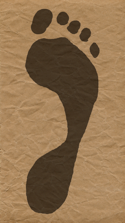
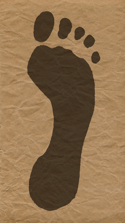
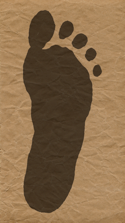
Supinated
or High-Arched Foot
How to Buy The Right Shoes -
Good shoes are still the best investment you can make in your running or walking program. Along with a sensible training schedule, they are essential in helping to prevent injury.
But with all the different shoe models available, finding the right shoe for your specific needs can be a daunting process. And with new shoes being introduced each season, there is a constantly growing selection from which to choose.
First off, It is very important to buy your shoes from a knowledgable salesperson. If they don't run or walk, find someone who does. If you don't know where to shop, ask someone who has been running for a while.
When shopping, take along your old shoes, a pair of running socks, and your orthotics (if you wear them). Tell the shoe salesperson about your running history, including past injuries, the type of training you do, and your goals. And tell them what has or hasn't worked for you in the past.
A good salesperson should be able to "read" the wear pattern on your old shoes and will be able to make several recommendations based on the information you provide.
When shopping for new shoes, be prepared to spend time looking. Don't settle for the first pair you try on. Because construction and fit can vary dramatically - even from the same manufacturer, it is important to try on several pairs.
Select two or three models that work best for your foot function. Compare the fit of each and then run or walk in the shoe. A good store will have a treadmill or track for you to test them out. Some running stores will even allow you to go out on the street or sidewalk to run or walk a few hundred yards to be sure the shoe fits properly and feels good.
You should avoid buying shoes by mail order or over the internet unless you are purchasing an exact model you've worn before. It's best to be properly fitted in person to ensure the shoe will meet your needs. Once you know your size from a particular manufacturer, you may be able to shop around on the web.
But remember, running shoes - like batteries - have a self-life, so don't stock up for more than a year advance.
It is always important to try on any shoes wearing the same socks you will run or walk in. And it is also a good idea to try on new shoes later in the day, when your feet may be slightly more swollen. This will help ensure a better fit when running or walking.
Always try on BOTH shoes.
You want a snug fit. So pull the laces tight enough to have a feeling of security without any discomfort. Pressure spots or loose fitting shoes can cause blisters. And if your foot slides excessively, you will lose energy on the toe off.
In the toe area, allow a thumbnail's length of space between top of longest toe on largest foot and the end of the shoe. As for width, the foot should fit comfortably without stretching the upper over the midsole of the shoe. The heel can move but is not supposed to slip.
Proper fit is essential to preventing injury - even if that injury is only a blister.
Don't ever buy shoes simply because they worked well for someone else. And be cautious of running shoe reviews. Running shoes are like cars; there is no one best shoe for everyone.
Never buy shoes because of some new fad, or make a purchase based solely on color, appearance, or a sale price.
Don't let someone talk you into buying cross trainers. Real running shoes are designed for forward motion and cushion the impact specific to running and walking. Cross trainers are designed for more lateral support and toe flexibility. If you use them as your running shoes, you'll risk injury.
When should you buy a new pair? Often, a shoe's upper will still be in good condition, but the cushioning and motion control is lost. Keep a record of the miles you log on your shoes, and replace them approximately every 300 to 400 miles (but no more than 500 miles) or if they show excessive wear on the sole.
To stay off the injured list its important to replace your shoes as soon as they begin to wear out or break down.
Sock It!
An important but often overlooked piece of running or walking apparel is socks. What's the point of spending $100 or more on new running shoes only to couple them with a pair of lo-tech discount tube socks?
Running socks should be made with synthetic fibers like polyester, acrylic, nylon, and spandex. Avoid cotton socks - or even a small percentage of cotton fibers. Cotton gets wet and stays wet. And because your feet perspire constantly, you want socks that will help wick moisture away from the skin to make your run or walk more comfortable and enjoyable
Sock weight is a personal preference. Hi-bulk socks may feel cushiony but they can affect shoe fit and bunch up when damp. Thin socks may not protect the feet from heat and friction. Medium weight socks provide a good blend of cushioning and protection without affecting shoe fit.
Expect to pay ten dollars or more per pair for quality running or walking socks. But they're a good value, because hi-performance socks will last for years and provide you with hundreds of blister-free miles.
If there is a large open area on the imprint where the arch of your foot didn't touch the ground, your feet are supinated (or high-arched).
Your feet are neutral or ideal if a moderate space is visible in the arch area. This is also known as normal pronation.
if a complete impression of your foot can be seen, your feet are pronated (or flat-footed).
Know which foot type you are will help you select the best shoe for your biomechanics needs.
SHOE TYPES
With so many models to choose from, shopping for running shoes can be overwhelming. Once you know your foot type, it makes selecting the correct shoe a lot easier.
Like feet, running shoes can be divided into three basic categories; Motion-control, Stability, and Neutral or Cushion. Some manufacturers will combine features from two categories and others have introduced new titles like minimalist, performance, and trail. But even these new shoes fit into either the stability or neutral categories.
Motion control shoes are best for pronated feet; the runner who has a flat foot or low arch and an excessive inward roll, or over-pronation.
Here's where it can get a little confusing…
Neutral cushioning shoes are designed for the supinated foot; the runner who has a high to normal arch and requires no pronation control or extra stability features.
But stability shoes best suit the neutral foot; the runner who has a normal to low arch, needs some cushioning, and requires only minimal motion control.
To avoid injury, purchase a shoe for your biomechanical needs.
SHOE CARE
The shoes you wear for running or walking require special care.
If you have invested in a quality pair of running shoes, you know how expensive they can be, and you will want to maximize their effective life span.
These shoes are a specialized pieces of sports equipment and should be treated that way. You wouldn't walk around in a pair of swim fins, ice skates, or even golf spikes. So never wear your running shoes for anything other than running or walking. That means, don't wear them for chores like mowing the lawn, or when you go fishing in the creek.
The materials used to construct most running shoes are almost always synthetic, and can be adversely affected by heat. Never leave your running shoes in a hot car all day. If you take your running shoes to work to run or walk afterward, be sure to remove the shoes from the car and take them with you indoors.
Always store them in a cool dry place out of direct sunlight.
Take care of your shoes and they will return the favor by providing you many miles of service.
Normal
or Ideal Foot
Pronated
or Flat Foot
Minimalist Footwear
Recently, there has been a lot of press (and hype) over the "minimalist footwear" craze. It's the latest bandwagon most running shoe manufacturers are eager to jump on. The term, "minimalist footwear" encompasses everything from running or walking barefoot to wearing any of the new shoe designs which have no motion control or stability devices, offer only minimum cushioning, and provide little or no drop from heal to toe.
Minimalist footwear seems a logical choice for minimalist sports like running or walking. In theory, running barefoot or in shoes which allow for unrestricted natural foot function should help you run faster and reduce injuries.
So are minimalist running shoes for everyone or are they just the latest fad? There are many factors to consider before making the switch - like body weight, biomechanics, past injury history, etc. - and in this article I will try to help you better understand the minimalist footwear trend so you can determine whether it's right for you. I will explain barefoot running, the advantages and disadvantages of minimalist shoes, picking the right footwear for you, and how to make the transition.
More or Less
Minimalist footwear includes everything from running or walking barefoot to wearing shoes with less cushioning, no stride-control, a lower center of gravity, and a lower heel-to-toe angle. The minimalist footwear craze is being fueled by success stories of runners who overcame chronic injuries simply by switching their shoes.
But before you decide to swap your traditional trainers for a pair of minimalist shoes, it's important to examine why these runners had fewer injuries. Most runners who did switch followed the manufacturers' recommended transition process which includes short-duration shoe drills and foot-strengthening exercises.
Because there is little or no cushioning, running in minimalist footwear necessitates a shorter, more controlled stride which in turn reduces the impact of each foot strike.
So it is not the footwear alone but rather the altered running style including shorter stride length, faster turnover, and reduced heel strike that produces the improved form and the potential reduction in injuries. And runners and walkers don't need to switch their footwear to reap the benefits of improved running form.
Barefoot Running
Although it has been around as long as man has been on the earth, barefoot (or nearly barefoot) running gained popularity a few years ago when the best-selling book 'Born To Run' was published. Soon after, footwear like the FiveFingers was introduced. If you've never seen FiveFingers shoes, they are essentially rubberized socks with individual toes. And they are worn to protect feet from hot pavement, icy roads, or potential abrasions.
There is ample scientific evidence suggesting that including barefoot training in a running program can help someone go faster and farther with fewer injuries. That's because barefoot running - like all minimalist running - necessitates an alteration to running form and encourages a forefoot strike and shorter stride that reduces impact to the knees, hips, and lower back.
But if barefoot running isn't your style, or if you prefer a little more between you and the road, there are alternative minimalist shoes which are basically lighter, less supportive versions of traditional training shoes.
Alternative Shoes
If the new barefoot running craze isn't quite your style, but you would still like to try minimalist footwear, there are a variety of alternative shoes to consider which are basically lighter, less supportive versions of regular running shoes.
These shoes range in weight from approximately 6 to 10 ounces. Above 10 oz. you'll find most of the traditional trainers. Generally speaking, the greater the weight, the more cushioning and control the shoe will provide.
Minimalist shoes not only provide less cushioning and stride-controlling structure, but they are lower to the ground and have lower heel-to-toe ramp angle. The greater the ramp angle, the greater the propensity to cause a 'heel' strike instead of a forefoot strike.
So you can either go directly to 'barefoot running' or gradually move down the scale of lighter shoes with less heel-to-toe drop. In either case, you will need to follow a plan of transition which includes strengthening, stretching, an alteration to your running form or gate retraining, and a controlled adaptation to the new footwear using the 10% per week rule to increase the distance you go in those shoes.
The Downside
Although there are potential benefits in switching to minimalist running shoes, there are a few things you need to consider before jumping full force on the minimalist bandwagon.
A rapid transition of going from padded running shoes to minimalist running shoes can quickly lead to injury.
Converting from a lifetime of running with heel striking form isn't easy to 'unlearn'. Many runners and walkers are natural 'heel strikers'. An the vast majority of running shoes have built up heel pads and steep ramp angles which almost force you to land on your heels.
Making the transition to minimalist or no running shoes is a lot more taxing on your feet, ankles, and calves. It takes time to adapt.
I've stepped on nails which have punctured the soles of my running shoes, but never broke my skin. Thick-soled shoes are much more forgiving when running over sharp objects, ice, and hot pavement.
And it is important to remember that for every success story of a runner who overcame a chronic injury wearing minimalist shoes, there is a story of another who developed shin splints, plantar fasciitis, or even suffered a stress fracture.
The Upside
With all the talk about of minimalist shoes and barefoot or nearly barefoot running, you may be wondering, what exactly are the advantages?
The benefits include a more efficient stride resulting from a dramatic increase in the sensory information received by your feet. This promotes a transition to a mid- or fore-foot strike pattern and away from a high-impact heel strike.
Wearing less on your feet can, over time, strengthen the muscles in your feet and legs and eventually support you better as you run.
And typically, a shorter running stride length develops which will also help reduce impact force.
To sum it all up, research suggests that by gently landing on your mid- or forefoot either barefoot or wearing lighter weight minimally padded shoes you may become faster, more efficient, improve your running form and, theoretically, reduce injuries.
And remember, many laughed at Abebe Bikila when he ran barefoot through the streets of Rome in the 1960 Olympic Marathon. He went on to win and set a new record.
Making The Switch
If you've decided to switch to minimalist running shoes, it's extremely important you make the transition carefully. If you make the change too quickly you'll risk injury.
So here are a few tips to help you make the transition:
Build a strong foundation focussing on drills that develop strength, balance, and stability.
Do shoe drills; running short intervals on a treadmill, track, or a flat surface.
Build up slowly by walking around barefoot over various surfaces.
Lengthen the time you run barefoot (or with minimalist shoes) by just a minute or two more, a few times a week. Go slowly and run lightly. Try different surfaces like dirt, grass, asphalt, and concrete and and let your body slowly adapt to this new running style.
Stretch and massage your arches, calves, and hamstrings regularly as you make the transition.
Remember, it will take time for your foot to adapt to the lack of support. So focus on form first with a fore-foot or mid-foot strike; distance and speed should come later.

"In this section I have posted a few of the articles I have written, as well as the text from some of my weekly tips, pertaining to feet, shoes, types of footwear, and how to buy shoes. I hope this information is helpful."
Mark Sullivan
You can reach me by e-mail here:

The audio file above explains a simple exercise you can do to increase foot flexibility and strength. (Note: If a player bar does not appear, try reloading the page. Or, you can simply click on the image to play.)
© 2025 iRuniCoach.com
